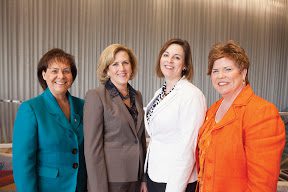When McDonald’s Corp. executive chef Dan Coudreaut gave away the secret recipe to the company’s famed Big Mac special sauce last summer, customers around the world marveled at the revelation. The secret had, after all, been front and center of the company’s marketing campaign for its marquee burger for decades.
Not part of the well-known Big Mac jingle — but perhaps equally as vital to the Oak Brook, Ill., company’s success — is its learning and development team, its other special sauce.
At a time when most departments are being asked to do more with less, McDonald’s learning department is consistently given all the resources needed to develop, deliver and maintain effective and relevant learning.
“Our impact to the business is clear to senior leadership, who continues to solicit our voice and support learning and development financially, through technology and additional resources,” said Diana Thomas, the company’s vice president of U.S. training. “On top of that, ROI is also clear to our franchisees, who rate our training and tools as positively impacting their people and business results.”
Thomas said McDonald’s learning metrics show that its top-performing restaurants use the company’s training more effectively than others. As a result, those restaurants enjoy lower crew and manager turnover, higher employee engagement, better customer satisfaction scores, fewer complaints and higher cash flow.
Every time a new product, tool or process is deployed, the U.S. training, learning and development team is involved to ensure restaurant performance will sustain or improve customer satisfaction. Every topic and delivery method is designed to meet a business need. This includes alignment across the company as the learning team partners with other departments, franchisees and suppliers to design the best performance services for the system.
“By shifting from being a training team to a performance solutions organization, we are expanding our capabilities to analyze customer needs and determine appropriate learning and performance interventions,” Thomas said. “This way, in addition to formal training, we are determining needs for performance support, communications, incentives and improved expectations.”
Once a learning need is identified, the team uses five moments of need to determine what, if any, formal training is needed in combination with performance support. The five moments are:
• When learning for the first time.
• When wanting to learn more.
• When trying to remember/apply.
• When something changes.
• When something goes wrong.
For example, the learning team is supporting the rollout of new technology used to develop crew and manager schedules. It was decided that the team should blend traditional classroom training with a virtual kick-off session and self-study e-learning modules.
To provide support during the actual schedule generation, the learning team enabled a help system within the application with multiple online job aids, including short checklists and show-me modules, which show learners how to use the application for the step they are on.
The five moments of need, Thomas said, help foster the company’s “plan to win,” a framework to design and deliver learning and performance services for all levels of the organization, from the crew room to the board room.
The plan is supported by goals in five areas: people, products, place, price and promotion. For 2011-2013, focus areas were elevating talent management, optimizing the menu, broadening accessibility and modernizing the restaurant experience.
“Learning is our culture. It’s the foundation of what makes us better,” Thomas said. “It’s deeply ingrained at all levels and in all aspects of performance evaluation and development. We don’t need to build and maintain leadership commitment to the importance of training. We need to support it.”
Thomas said the learning team’s alignment with the business ensures the company routinely feeds its talent pipeline. Learning alignment to the business also may be why it’s not uncommon for learning team members to become leaders in other departments within the company.















